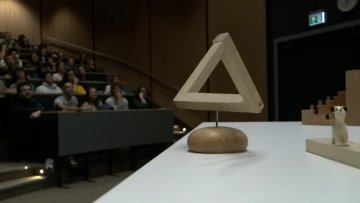Induced subgraph density. VII. The five-vertex path
Nguyen, T
Scott, A
Seymour, P
(23 Dec 2023)
http://arxiv.org/abs/2312.15333v2
Induced subgraph density. VI. Bounded VC-dimension
Nguyen, T
Scott, A
Seymour, P
(25 Dec 2023)
http://arxiv.org/abs/2312.15572v2
A PDE approach for solving the characteristic function of the generalised signature process
Lyons, T
Ni, H
Tao, J
(04 Jan 2024)
Mon, 05 Feb 2024
15:30
15:30
L4
Bicommutant categories
Andre Henriques
(Oxford University)
Abstract
Bicommutant categories, initially invented for the purposes of Chern-Simons theory and 2d CFT, seem to also appear in other domains of math with examples related to group theory, and dynamical systems.
Global sections of equivariant line bundles on the $p$-adic upper half plane
Ardakov, K
Wadsley, S
(19 Dec 2023)
Our 2024 Oxford Mathematics Public Lectures kick off logarithmically next month with Oliver Johnson describing the history and importance of logarithms in our lives.
Until then, how about 77 online lectures and discussions including the likes of Stephen Hawking, Jim Al-Khalili, Hannah Fry, Carlo Rovelli, Sarah Hart and Andrew Wiles;
When his record company told avant-garde musician Anthony Moore that his work was not commercial enough he wasn't happy. Or rather he was Slapp Happy, the name he gave to his new band with their deliberately commercial sound. The band became less commercial subsequently but not before songs such as 'Blue Flower' bloomed. Dagmar Krause provides the distinctive voice.
Fast randomized numerical rank estimation for numerically low-rank matrices
Meier, M
Nakatsukasa, Y
Linear Algebra and Its Applications
volume 686
1-32
(08 Jan 2024)
Transient amplification of broken symmetry in elastic snap-through
Wang, Q
Giudici, A
Huang, W
Wang, Y
Liu, M
Tawfick, S
Vella, D
(21 Dec 2023)
http://arxiv.org/abs/2312.13908v1
Exploiting dynamic bifurcation in elastic ribbons for mode skipping and
selection
Huang, W
Yu, T
Vella, D
Hsia, K
Liu, M
(25 Dec 2023)
http://arxiv.org/abs/2312.15699v1
selection


